
William Butterfield was a British Gothic Revival architect and associated with the Oxford Movement. He is noted for his use of polychromy.

Cartmel Priory church serves as the parish church of Cartmel, Cumbria, England.
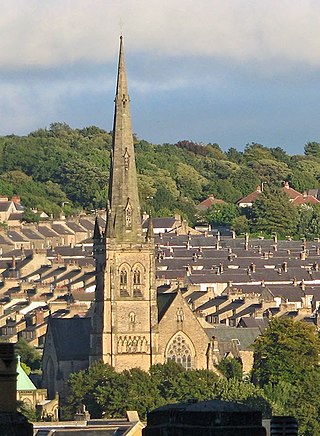
Lancaster Cathedral, also known as The Cathedral Church of St Peter and Saint Peter's Cathedral, is a Roman Catholic cathedral in Lancaster, Lancashire, England. It was a Roman Catholic parish church until 1924, when it was elevated to the status of a cathedral. It started as a mission church in 1798, and the present church was built on a different site in 1857–59. It was designed by E. G. Paley in the Gothic Revival style and is a grade II* listed building. In 1901 a baptistry was added by Austin and Paley, and the east end was reordered in 1995 by Francis Roberts. The cathedral is in active use, arranging services, concerts and other events, and is open to visitors.

Sir Arthur William Blomfield was an English architect. He became president of the Architectural Association in 1861; a Fellow of the Royal Institute of British Architects in 1867 and vice-president of the RIBA in 1886. He was educated at Trinity College, Cambridge, where he studied Architecture.
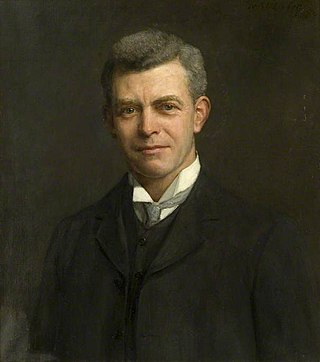
Sir Charles Archibald Nicholson, 2nd Baronet, was an English architect and designer who specialised in ecclesiastical buildings and war memorials. He carried out the refurbishments of several cathedrals, the design and build of over a dozen new churches, and the restoration of many existing, medieval parish churches.
John Raphael Rodrigues Brandon was a British Gothic Revival architect and architectural writer, much of whose work was done in collaboration with his brother Joshua, until the latter's death in 1847.
Frank Ernest Howard was an English architect who worked exclusively in the area of ecclesiastical furnishings and fittings.

St Paul's Church is in Scotforth, a suburb of Lancaster, Lancashire, England. It is recorded in the National Heritage List for England as a designated Grade II listed building. It is an active Anglican parish church in the deanery of Lancaster, the archdeaconry of Lancaster and Morecambe, and the diocese of Blackburn. The architectural historian Nikolaus Pevsner described it as a "strange building" and "an anachronism, almost beyond belief".

Charles Hodgson Fowler was a prolific English ecclesiastical architect who specialised in building and, especially, restoring churches.
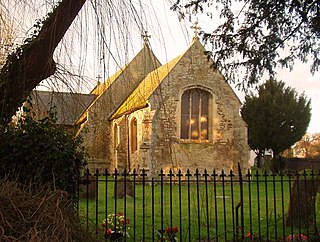
St George's Church, Little Thetford, is an Anglican church in the village of Little Thetford, Cambridgeshire, England.
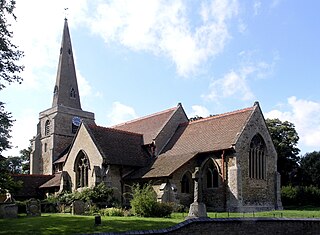
St James' Church, Stretham, is an active Anglican church in the village of Stretham, Cambridgeshire, England. Founded in the 12th century, it was heavily restored by the architect J. P. St Aubyn in 1876. English Heritage, a body responsible for preserving historical sites in the United Kingdom, assessed the church a Grade II* listed building. The turret clock on the east face of the tower was also made in 1876, by JB Joyce & Co of Whitchurch, Shropshire, and still keeps good time. The church has a ring of six bells hung for change ringing. Regular ringing resumed at the church in June 2011 after several years' silence. St James' is one of eight churches in the Ely Team Ministry.

St Peter's Church is in Firs Lane, Westleigh, a district of Leigh, Greater Manchester, England. It is an active Anglican parish church in the deanery of Leigh, the archdeaconry of Salford, and the diocese of Manchester. The church is recorded in the National Heritage List for England as a designated Grade II* listed building. It was designed by the Lancaster architects Paley and Austin. The architectural historians Pollard and Pevsner describe it as "one of their most radical and thrilling churches".

St Peter's Church is in Windmill Street, Macclesfield, Cheshire, England. It is an active Anglican parish church in the diocese of Chester, the archdeaconry of Macclesfield, and the deanery of Macclesfield. It forms a team ministry with three other Macclesfield churches: St Michael, All Saints, and St Barnabas. The church is recorded in the National Heritage List for England as a designated Grade II listed building. It was a Commissioners' church, having received a grant towards its construction from the Church Building Commission.
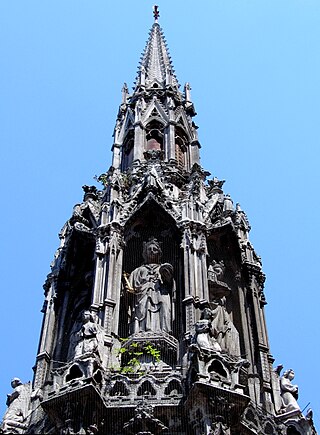
Thomas Earp (1828–1893) was a British sculptor and architectural carver who was active in the late 19th century. His best known work is his 1863 reproduction of the Eleanor Cross which stands at Charing Cross in London. He specialised in sculpture for Gothic Revival churches and worked closely with the architect George Edmund Street in the 1860s and 1870s.
Francis Xavier Velarde OBE was an English architect who practised in Liverpool, Merseyside, England.
Richard Reynolds Rowe was an English architect and civil engineer, mainly active in Cambridge and Cambridgeshire. His best-known work is the Cambridge Corn Exchange.













